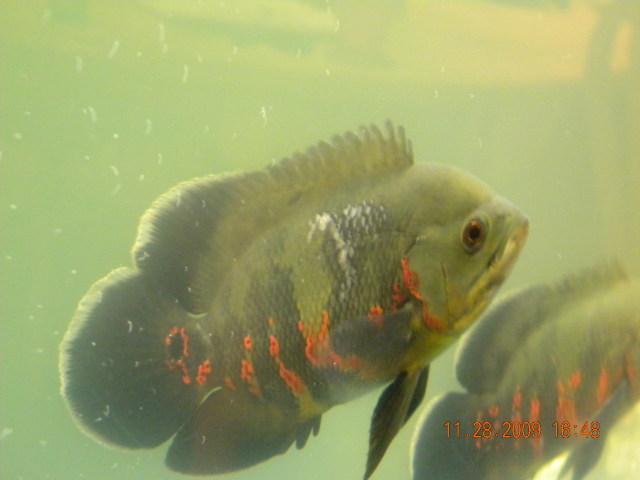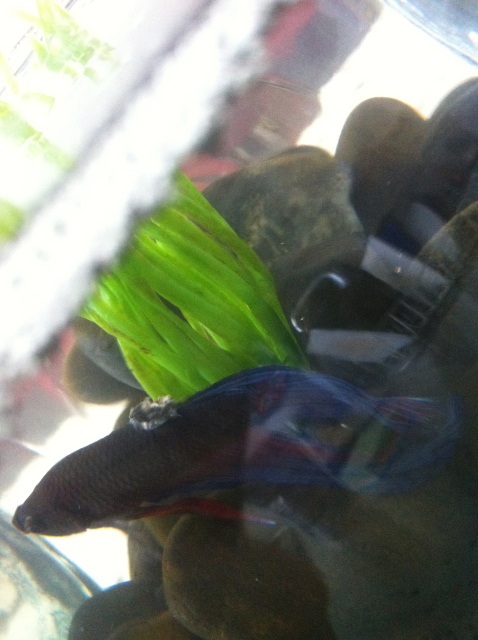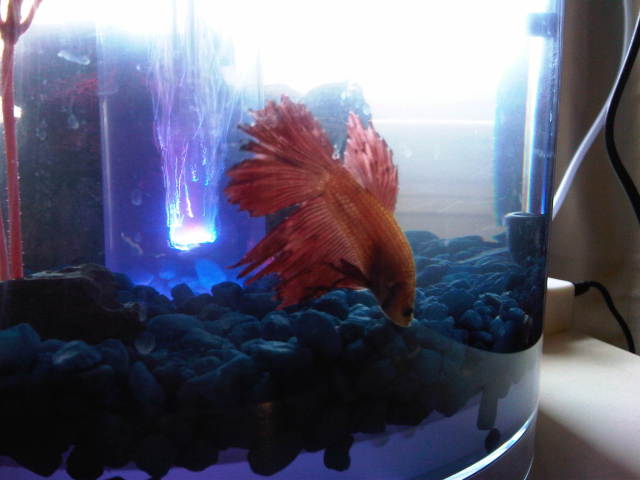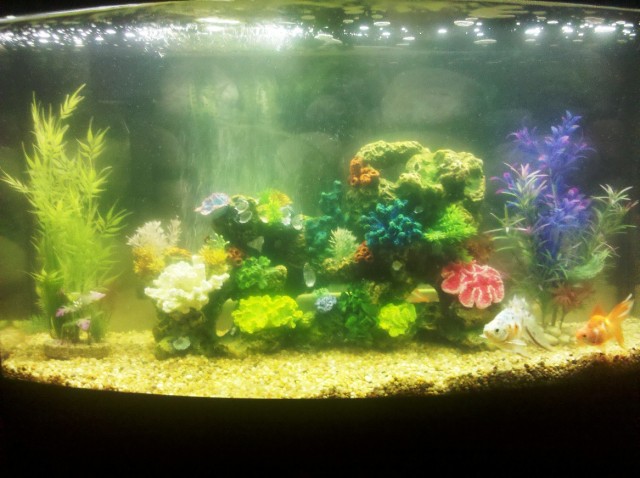QuestionHello Chris. I just set up a 30 gal freshwater tank less than a week ago. I currently have six fish that have been in for 24 hours (a couple of mollies, neons, a goldfish). How long can I expect to wait to see the procession of the nitrogen cycle? After 24 hours with the new inhabitants, the ammonia and nitrite levels show zero. I am worried that my Ph is high (7.6), what's the best way to reduce it? Any guidance that you can provide would be greatly appreciated.
John Pierce
AnswerHi John;
It will be a week or so before you see ammonia rise, but rise it will! Especially with so many fish to start it out. There really should only be a total of 3 inches of fish to start your 30 gallon, but hopefully they will be okay as long as you keep monitoring ammonia and making 25% water changes as needed. I will include my article on new tanks at the end of this letter so will know what to expect. I would strongly suggest giving the goldfish his own tank. Goldfish are coldwater fish that cannot tolerate the tropical temperatures your other fish need. If he does survive he will eat your neons when he gets bigger anyway and it really doesn't take long.
It's best not to mess with the pH. Trying to change it causes more stress to the fish than letting them get used to a pH that you don't think is okay. PH adjusters might "correct it" for a few hours, but it will often rebound again and you may have to add more. In the meantime the fish are not liking these fluctuations and could easily get sick. A pH of 7.6 is actually very good. As the tank ages it will naturally drop a bit anyway. Proper maintenance keeps pH in check naturally and safely. So don't worry about it. Easier on you and easier on the fish too.
**********
New Tank Syndrome or Break-in Period
So you have a new tank and you filled it up, put the filter together, mounted the heater into place and turned on the lights. You have all the plants and decorations where you want them....
You are ready for fish.
But, your filter is not ready for a full tank of fish yet.
The filter is running and moving the water and cleaning out crud, right? Of course!
But a very important part of your filter is the part you can't see. An aquarium filter removes the larger visible stuff, but it also must remove the dissolved fish waste that turns into ammonia in the water. To do this, special bacteria must grow in the filter system and on the particles of gravel in the bottom of your tank. This process occurs even on a limited scale in little fish bowls that have no filter in them.
This is "New-Tank Syndrome" or the "Break-in Period". The entire process takes 6 to 8 weeks to complete because these "nitrifying" bacteria grow quite slowly.
Start off with only one or two hardy fish (no more than 2 total inches of fish) for every ten gallons of water and don't add more until the 6 to 8 weeks has gone by. Hard to be patient, but it is worth it to keep your fish alive and healthy. As a matter of fact, the bacteria cannot develop without fish in the tank. You can let that tank sit forever without fish in it, but as soon as the first fish goes in the process begins. Avoid changing the filter pads during break-in. This removes the bacterial colonies that are essential to a balanced aquarium. You can rinse the filter pad out in a container of aquarium water. This will preserve most of the bacteria colonies while still allowing your filter to flow freely. Even using bacteria additives and water conditioners when you first set up the tank will not make a tank begin the cycle by itself. If there are no fish to provide food (fish waste) for the bacteria, the beneficial bacteria cultures will die and you will have to start the colonies all over again once fish are added to the tank. Once the tank has completed the initial cycle, you can change the filter pads every 4 weeks or so. But for now, just rinse them.
Feed your new fish VERY lightly. Any excess food will cause additional waste your system cannot afford to have right now. If you see food floating around or lying on the plants and gravel after five minutes, too much food is going into the tank. Cut back a little each time you feed until it is ALL gone 5 minutes after you feed them. Feed them once a day.
During this "break-in period" your tank will become cloudy and milky looking. You may have to tolerate this for the entire break-in period but it is only temporary. Changing 25% of the water three times a week until the break-in period is over helps a great deal. Changing water reduces the ammonia and nitrites that rise while the bacteria continues to multiply. If ammonia and/or nitrites become too high, your fish will become stressed and possibly die. Use a good water conditioner when you replace the water and make sure it is the right temperature to avoid shocking your fish.
When the break-in is over after 6 to 8 weeks and there are no nitrites or ammonia present in the water you can slowly add more fish. Add one or two every week until you reach the desired population. This allows the bacteria to adjust to the new population every time before adding more. Monitor the nitrites and ammonia to be sure they don't come up. If they do, make a 25% water change and check them again. Don't add the next fish until the levels are down again.
The safe maximum population for any size tank is one inch of adult fish for every gallon of water in the tank. Do some research to be sure of the fish you are interested in. Even though they are small when you buy them, you have to base your population calculations on full-sized adult fish. Many hobbyists have up to two inches per gallon but this can be risky. If a water quality issue arises or a disease occurs it will spread fast and furious in an over-populated tank. In any case, 25% water changes every week to two weeks are absolutely essential for the health of your fish.
Following these guidelines will help you get your new tank on the right track.
**********
At Your Service;
Chris Robbins
Come on over and join us on the freshwater fish forum at About.com to get even more information too;
http://freshaquarium.about.com/od/questionsanswers/a/naavigateforum.htm

 Oscar patchy white scales and cloudy tank
Question
Oscar and cloudy tank
I have two oscars about
Oscar patchy white scales and cloudy tank
Question
Oscar and cloudy tank
I have two oscars about
 Goldfish diseases
Question
Fantail goldfish
Hi Jaymie,
&nb
Goldfish diseases
Question
Fantail goldfish
Hi Jaymie,
&nb
 Siamese fighting fish has weird white growth
Question
white growth
Siamese fighting fish has
Siamese fighting fish has weird white growth
Question
white growth
Siamese fighting fish has
 betta - color fading/fringed fins
Question
betta
Let me just start by saying I have recei
betta - color fading/fringed fins
Question
betta
Let me just start by saying I have recei
 My tank water is green - help!
QuestionMy Tank
QUESTION: Hi,
I have a 46 gallon
My tank water is green - help!
QuestionMy Tank
QUESTION: Hi,
I have a 46 gallon